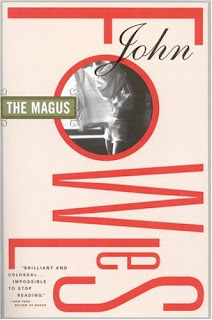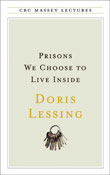Readers of this blog (both of you!) may have caught my previous mention of the strange road I took in finding Mikhail Bulgakov’s The Master and Margarita – not only the book itself but also this particular translation (self-published by Michael Karpelson – more on this later). Without exaggerating, it was well-worth the effort.
How does one describe this book? Well, considering all the fuss over Harry Potter as of late (or perennially, as it would seem), The Master and Margarita would seem a perfect literary tonic for anyone looking for speculative adult fiction. Hailed as one of the best pieces of Russian literature (not just speculative) of the 20th century, such praises can also be intimidating; visions of a depressing, Dostoevskian St. Petersburg, and the obligatory poverty and mental illness which filter to a bleak (if well-rendered) conclusion. This is not that kind of book.
One day, two members of the reigning literary elite meet in a park to discuss problems with the subject matter of one of their poems – it’s not atheistic enough, says the elder, and thus not worthy of publishing (this being Soviet Russia, under Stalin’s rule). No sooner is the question (and denial) of the devil raised, than the two are greeting by a tall, dark stranger who appears out of the blue and proceeds to describe how one of them will die. And, albeit under fantastic circumstances, it comes true.
Pretty soon, the stranger and his motley troupe – a clownish bloke with a broken pince-nez, a fang-toothed redheaded goul, and a large, talking black cat who walks on his hind legs – occupy a townhouse in the centre of Moscow from which they direct a chaotic spell over the city. Anyone it seems who gets in their way – usually members of the cultural privileged classes – either vanishes, winds up in the sanatorium, or is vanquished to another part of the country.
Who are they? What are they doing? All of this is unravelled (and exploded) the further into the book one reads. We meet the eponymous Master, a discouraged writer whose seminal work on Pontius Pilate is lain to waste by the bureaucratic tendrils of the sycophantic literary scene, and his faithful lover, Margarita – a married woman who would do anything to be free of her chains and reunited with him.
The Master and Margarita is a wild, throw-the-rulebook-out-the-door tale which manages to weave outrageous satire with eloquent speculation on morality. Bulgakov’s novel confidently navigates between deft, fantastic comedy and touching, emotional drama – without one disregarding the power of the other. Written under the tyrannical reign of Stalin from 1929 until Bulgakov’s death in 1940, it is both a response to the madness of that period and a triumphant individual statement.
I wouldn’t hesitate to recommend this book to anyone who is looking for something fantastic and unpredictable to consume them. It is truly a book that can be read and re-read numerous times, with each pass being as fulfilling as the next.
The Master and Margarita, by Mikhail Bulgakov (ISBN: 978-1411683051) is available at a friendly independent bookstore near you. Or online at any number of vendors.
A note about this translation: The translation I refer to above is the latest, by Michael Karpelson. While listed on Amazon, he is currently making small revisions to this edition which, combined with other projects in the works (another book by Bulgakov as well!), means it will not be available for the next while. If you like, I’ve received permission from Michael to post his email address – if you contact him, he can arrange for a copy of the existing edition to be shipped to you, as he did with me. His email address is: mkarpelson (at) gmail (dot) com. {psst – support independent publications}
Another note (June 24, 2010): I recently read another translation of M&M, by the prodigious team of Richard Pevear and Larissa Volokhonsky. I’m a little surprised, because it seems as if it’s longer than the Karpelson version (ie. it has slightly more content in places). Maybe that’s just me. It’s certainly the easier of the two to purchase, so I put this out there for you to contemplate.









